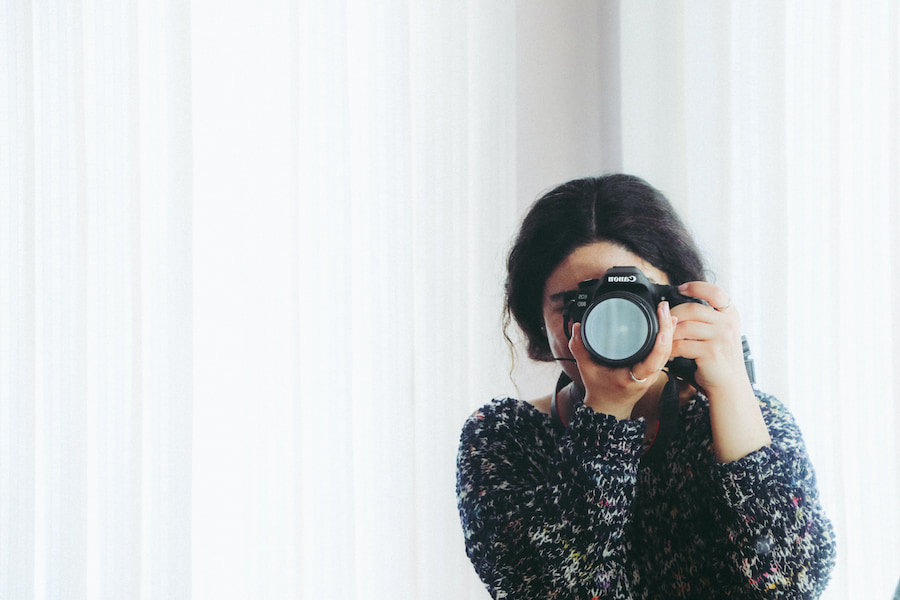
As an Amazon Associate we earn from qualifying purchases.
The reflective nature of glasses makes glass
Quick Navigation
Photographing reflective objects such as gems, sunglasses, watches, and windows requires you to control the light and its angle to eradicate possible reflections and glares. You can achieve this by combining lighting variations with real estate photography equipment and filters.
The overall principle in glass

Keeping in mind that the angle at which light hits an object is the same as it bounces back, you can use the following real estate
A lens hood primarily hinders the light from varying angles from coming into contact with the front element of the camera lens. In most cases, the lens hood will come with your lens.
You only need to attach it to the front of your lens to form a shade that eliminates glares, reflections, and flare. You can use any of the following lens hoods to prevent real estate glass
A polarizing filter is a specially made glass pane that helps to separate polarized light from the non-polarized. Polarized light is a light reflected from shiny surfaces such as glass and metal. Typically, a polarizing filter helps eliminate the polarized light, reducing the reflections and glass when capturing glass objects.
You should, however, keep in mind that the use of polarizing filters depends on the camera model you are using. For instance, many high-end cameras come with adaptors for built-in lens filters which most low-end and smaller cameras lack.
Additionally, the use of polarizing filters comes with the disadvantage of losing several stops of light, which can be an issue if you are taking interior photos in low-light conditions. Although you can solve this by using slower shutter speeds, it can cause image blurring if you're a shooting handheld.
Backlighting means that the prime lighting source is behind your object, eliminating reflections and glares. This method also helps separate the subject from the background and creates a stunning contrast effect.
However, this technique might not help when shooting real estate exterior photos of windows in broad daylight.
Using a lens with a longer focal length, such as 400 mm or even 500 mm, helps to magnify the object and make the subject appear closer. Although the angle of view becomes smaller, the increased magnification allows you to step farther from the subject when shooting.
Depending on the angle of reflections, there are higher chances of the light bouncing back and missing the camera lens. The background around the object will also be minimal, eliminating all the possible reflections emanating from the back. Typically, this reduces the chances of getting reflections.
Keeping in mind that reflection is the bouncing back of the light, the light bounces back with specific angles in relation to the source of light. Try to adjust the position of your camera, like moving it up or down or moving it a few inches to the right or left.
You can also place the lighting source 45 degrees on the side of the object and still deliver a perfect image. Your position when getting the shot should be right beneath the light source to avoid your reflection and make sure there is a reasonable distance between the light source and the object.
Do not place your camera at the same angle as the light source. Ideally, the light will bounce back at the same angle that it hits the glass, and there are higher chances it hits directly to your camera.
If the rest of the methods are failing, try the blackboard peephole. The color should be black to eliminate its reflection on the object. The peephole should be the size of your camera lens. Place the board away from the object, then take a shot.

Although many people overlook this idea, it can be the solution if you are getting reflections due to multiple light sources. Typically, when you have several light sources illuminating a glass object, many light beams will hit the object at an angle, causing reflections.
The best way to prevent this is to switch off or cover the unnecessary light sources and only operate with the primary light source. Keep in mind that reducing the lighting might require you to use higher ISO settings that can cause grainy effects.
Even with the best camera lens, filters, and angle variations, it can be challenging to avoid reflections altogether in real estate glass
If you are using these Adobe applications, you can use the Clone Stamp tool to paint the regions of your photo that have glare and reflections. However, this method also can't eliminate reflections entirely, and the quality of your photo will mainly depend on your skills in avoiding reflections when taking the shots.
In most cases, the angle variations, filters, and lighting adjustments you will need to avoid reflections in glass
The best way to photograph an object attached under glass is to switch off the camera flash as it might cause reflection on the glass surface. Instead, shoot the photo in good ambient lighting or use slower shutter speeds with a tripod setup.
Yes, it is possible to recreate glass reflection in Photoshop using the Flip Vertical function of the Adobe Photoshop Transform tool. This feature allows you to create a mirror image of the region of the photo you have selected. You can then use the layer mask feature to tweak the effect until it looks natural.
Whether you are taking real estate interior or exterior photos, there might be some glass objects causing reflections and glare, affecting the photo quality. Learning how to avoid reflection in glass
